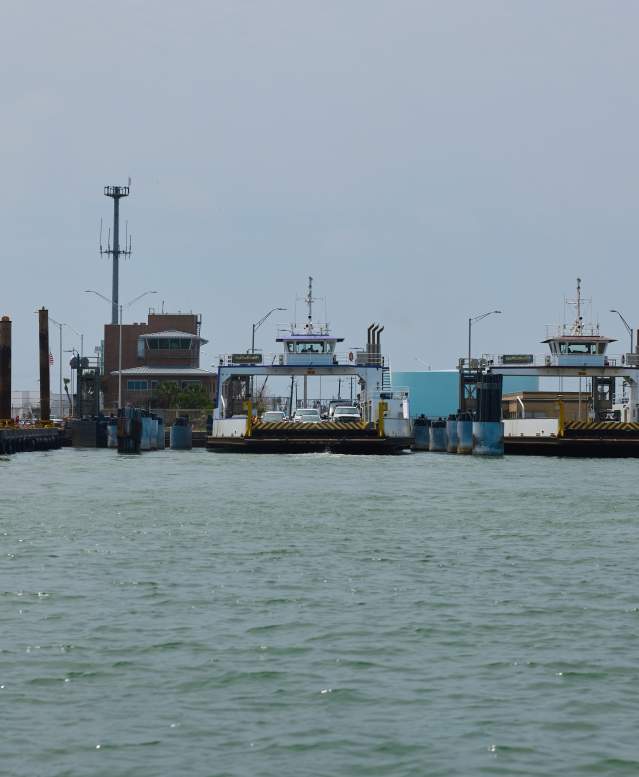Ferry
Get Ferried Around
There are two main ways to get into Port Aransas–from the south side of the island via State Highway 361 or across the ferry from the north. Of the two, the second is the more exciting by a landslide. When you board the ferry on the Aransas Pass side and cross that strip of water into Port Aransas, your easiest mode of transportation also becomes the portal to your vacation destination. Enjoy the short ten-minute ride from your car or walk aboard to watch the dolphins play in the wake and see huge ships pass through the channel.
For more detailed information, including real-time ferry waits, ferry rules, and more, see the Texas Department of Transportation. For ferry camera viewing, see webcams.
Operation Times
The Port Aransas ferry system, one of only two total in Texas, operates 24 hours a day, 7 days a week, weather permitting. Anywhere from two to six ferry boats run in a day, depending on traffic and season.
The ferry will be closed in event of a severe storm or hurricane making landfall near Port A, as increased water heights mean the ferries cannot be safely secured at the loading and unloading ramps.
Boarding
Traffic coming off the ferry from Aransas Pass can head straight onto Cotter Avenue or turn onto Cut Off Road. Traffic to the ferry loading lanes comes from Cut Off Road with a turn onto Port Street.
Wait Times
The best way to stay in the know on ferry wait times is through the Port A Ferry Twitter. There is also a 24-hour radio station (AM 530) containing information on ferry regulations and which can be used for live broadcasts in case of emergencies.
During peak season and holidays, the line to get on the ferry coming to Port A could have an hour or more wait. Be sure to prepare with snacks, drinks, or things to do or read, and don’t forget to take that bathroom break before hitting the road to the ferry.
The line in the opposite direction, heading off the island to the mainland, is typically longest after checkout time on Sundays and after large community events. Again, be prepared with snacks, drinks, and whatever else you may need.
Ferry Capacity
The ferries can hold up to twenty passenger vehicles but has size restrictions for other vehicles, the details of which can be found on the TxDOT website. If you have a large RV or 18-wheel truck, you should check with TxDOT to be sure the ferry can handle the weight of your load.
Lower than normal tide conditions may also limit the types of vehicles able to board, as the increase in angle to the loading ramp heightens the risk of damage to vehicle and trailer undercarriage.




